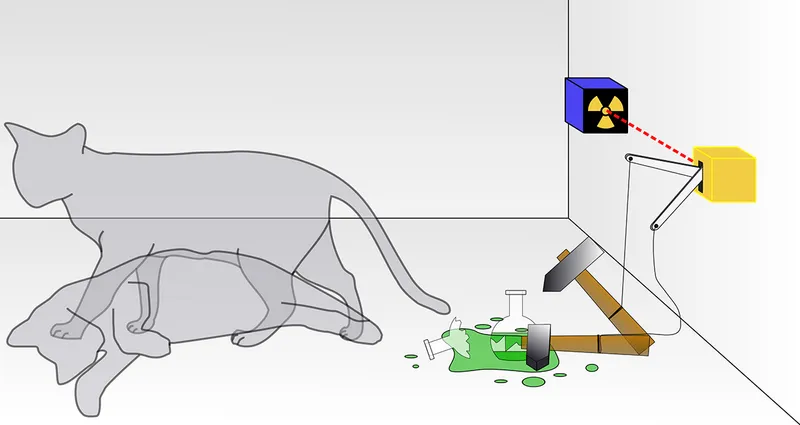Quantum immortality states that, if the many worlds interpretation of quantum physics is correct, someone attempting ‘quantum suicide’ would fail, as there would be at least one timeline in which they survive.
Confused? Then let’s rewind a little and talk about a concept that most people are familiar with.
Schrödinger’s Cat

Schrödinger’s Cat is the hypothetical feline inside a cardboard box that’s either been killed, or not, by a bullet fired by a gun controlled by a ‘qubit’, a particle that can be in two states at once.
Per quantum theory, the cat is both alive AND dead until an outside observer looks inside the box to check.
But there are two interpretations of what’s happening here.
According to the standard ‘Copenhagen interpretation’ (CI) of quantum theory, whichever of the two states is NOT observed immediately collapses.
That is, if you see a dead cat, there is no alternate timeline where the cat is alive.
According to the ‘many worlds interpretation’ (MWI) proposed by Hugh Everett in 1957, though, there are now two extant timelines: one in which the cat lived, and one in which it died.
Other theoreticians later suggested that an easy way to check this would be to put yourself in the same position as Schrödinger’s cat – inside a box with a qubit-controlled gun firing at you.
That’s what we mean by attempting ‘quantum suicide’.
If you find yourself alive once the box has been opened, then you clearly now exist on a timeline in which you/the cat survived: that is to say, MWI is correct.
And you have achieved ‘quantum immortality’.
Could quantum immortality actually happen?

What’s more, say proponents of the idea, quantum immortality could have happened before, in the real world.
That car that nearly ran you over? Some would argue that, in another timeline, it did indeed hit you, and you died.
And it’s only thanks to quantum immortality that you’re reading this now.
Other physicists, mathematicians and philosophers have suggested there are major problems with this idea.
They point to the non-binary nature of death (it’s usually a long, slow, multi-faceted process) and the mathematical difficulties of talking about probability in any meaningful way in a quantum universe.
But those are highly complex arguments, and probably best saved for another day…
Want more head-twisting science? Read our interview with theoretical physicist John Ellis.
